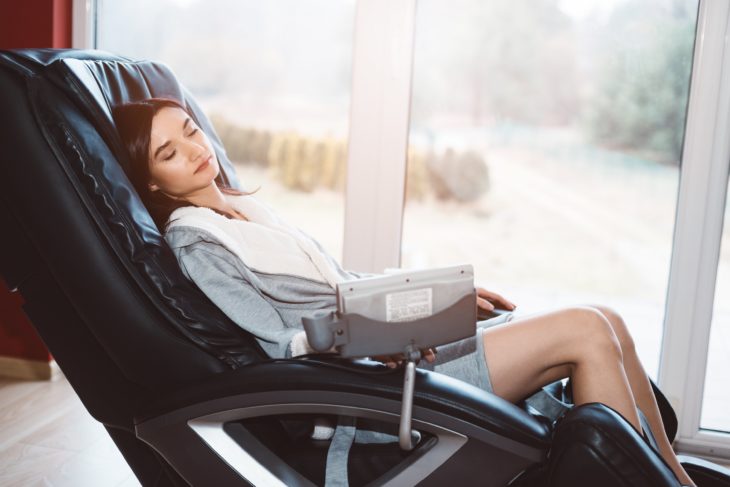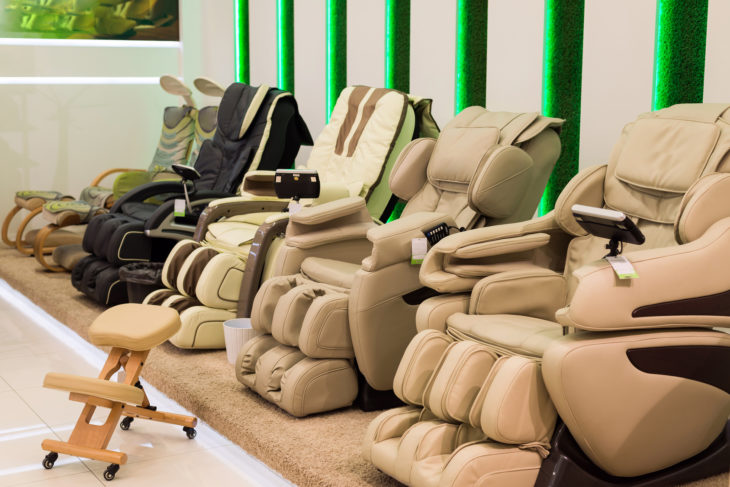If you have back pain, tightness, and muscle stiffness, then your back is likely to be “ripe” for a good massage. Today, it can be even easier. You don’t have to spend your time and money going to physical therapy treatments. You can do it from the comfort of your home, using a massage chair.
Contents
Why Does Back Pain Occur And How To Prevent It?
Tense and sore muscles are generally shortened and usually containing Myogelosis. These are painful nodes that are encapsulated lactic acid build-up. They occur in prolonged activity in inappropriate positions as well as in muscle overload. Now that we have established what is it about, we should explain what happens with them during the massage. In such health conditions, massage should be used to improve circulation, so that the muscles can be as much blood-streamed as possible. This way, the nodes will gradually decompose. What you should know is that you shouldn’t experience sharp or unbearable pain during a massage treatment. If it hurts more, it doesn’t mean that the treatment is better and more successful. Quite the opposite, you can face counter-effects and soft tissue injury. Therefore, if you are visiting a physiotherapist, always be honest.

Source: mobilityhelp
What Does a Massage Chair Offer?
The massage device provides relaxation. Different massage methods, such as kneading, throbbing, pressing and stretching, as well as varying degrees of pressure, are a mechanical trigger for the skin and connective tissues, along with the muscles. The tension is released and the bloodstream accelerates. Scientific research has proven that massage reduces the release of stress hormones and relieves pain. The internal forces of self-healing are stimulated and activated. The massage chair at no point doesn’t lead to muscle stiffening. Around the massaging sites, connective tissues are relaxed. The blockages are also released in the deeper layers of the muscles. If you suffer from pain, the massage chair can primarily impact your muscles. For example, chemicals that have accumulated in the body due to stress can be destroyed through the muscles. More on that subject on this website.
How Much Does a Massage Chair Cost?
You would think that getting a massage chair for your home is expensive and you are probably right. Some modern chairs can be thousands of dollars and nobody is willing to give that much money for a massage chair. Luckily, there are cheaper options which you can explore at chairthrone. They are under $1000 mark and they all offer great quality.
Our Body And Its “Problematic Areas”
Our spine is the centerpiece of the entire body to keep our posture upright. Very often it is subjected to tremendous strain. It stabilizes our posture along with muscles and ligaments while guaranteeing the movement of the torso. Our spine is made up of 24 moving vertebrae, 7 neck vertebrae, 12 thoracic vertebrae and 5 lumbar vertebrae. In addition to these vertebrae, 23 discs are part of the spine.

Source: massagechairexpert
Natural Shock Absorber
Our discs consist of a soft-core, which is surrounded by a cartilage ring. Our discs are made up of 75% water and 25% solids that absorb water. But just like any other building block of our body, they depend on our care and nutrient intake. This absorption usually occurs in the evening and at night. In a relaxed position, individual vertebrae can be spaced apart to allow easier absorption of nutrients. When, after a long and exhausting day, we allow our body to regenerate – its function as a natural shock absorber will be guaranteed. In our 30s, the discs go through the ageing process and become even more sensitive with age. This can increase symptoms like headaches or dizziness. The reason may be that our head, or more precisely, our brain does not amortize the impact as well as before. If we think that the discs are more severely affected by this process, we can do something about it and take preventive actions. For example, a disc herniation takes approximately 7 years to develop from “onset” to a “condition”. Therefore, it is up to us to prevent it or delay it.
Muscles
Without muscles, people would not function. Muscle tightening and relaxation is determined by our body moving. And without movement, muscles produce a quarter of their energy. That generation increases significantly during exercise. A major part of our energy comes from body heat. During cold periods, when you shiver because of muscle tightness, it turns into “heat energy”. Another important task of our muscles is the central supply of all the elements (joints, cartilage, bones, organs) with necessary minerals and substances. Muscles are our main pathways when we inhale oxygen and transfer it from the lungs to the muscles. The stronger they are, the better the supply is. Due to various factors and lack of exercise, muscles can atrophy or become cramped, so that a smooth supply of individual areas and organs is no longer guaranteed.
